Szegedi Tudományegyetem - Ahol tudás és szándék találkozik
 Régi doktori képzéses anyagok
Régi doktori képzéses anyagok
Chair: Prof. László Dux DSc
Department of Biochemistry
H–6720 Szeged, Dóm tér 9., Hungary
Phone: (+36 62) 545 096 Fax: (+36 62) 545 097
E-mail: dux@biochem.szote.u-szeged.hu
Assistant chair: Prof. András Varró DSc
Department of Pharmacology and Pharmacotherapy
H–6720 Szeged, Dóm tér 12., Hungary
Phone: (+36 62) 545 682 Fax: (+36 62) 545 680
E-mail: a.varro@phcol.szote.u-szeged.hu
Co-operating institutions
University of Szeged, Faculty of Medicine
Department of Biochemistry
1st Department of Medicine
Department of Medical Biology
Department of Medical Informatics
Department of Pharmacology and Pharmacotherapy
Department of Surgical Research
Biological Research Centre of the Hungarian Academy of Sciences
Institute of Biophysics
Institute of Biochemistry
Central Labs – Laboratory of Functional Genomics
T-cell Medical Diagnostics Ltd, Laboratory of Tumor Pathology and Molecular Diagnostics, Szeged
SOLVO Biotechnology
This PhD School admits graduate students interested in educational and research programmes concerning both basic and clinical medical sciences relating to two major areas such as physiology, pathophysiology and pharmacology of the cardiovascular system as well as biochemistry, biophysics and molecular and cell biology. Of the outstanding past representatives of the School were in cardiovascular pharmaco-physiology Professor László Szekeres, in biochemistry and biophysics Professor Albert Szent-Györgyi (Nobel Laureate), and Professor Bruno F. Straub.
Educational Programmes
1. Physiology, Pathophysiology and Pharmacology of the Cardiovascular System
Programme director: Prof. András Varró DSc
Department of Pharmacology and Pharmacotherapy
H–6720 Szeged, Dóm tér 12., Hungary
Phone: (+36 62) 545 682 Fax: (+36 62) 545 680
E-mail: a.varro@phcol.szote.u-szeged.hu
Research Programmes
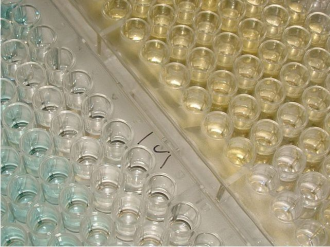 1. Experimental Cardiology and Cardiovascular Pharmacology
1. Experimental Cardiology and Cardiovascular Pharmacology
Coordinator: Prof. András Varró DSc
Department of Pharmacology and Pharmacotherapy
H–6720 Szeged, Dóm tér 12., Hungary
Phone: (+36 62) 545 682 Fax: (+36 62) 545 680
E-mail:a.varro@phcol.szote.u-szeged.hu
Research topics
– Mechanism of action of cardiovascular drugs studied by electrophysiological techniques at the cellular and subcellular level (Supervisor: Prof. Gyula Papp MHAS)
– The role of endogenous protective agents in pathological states of the heart (Supervisor: Prof. Ágnes Végh DSc)
– Prevention of sudden cardiac death by pharmacological means and diet (Supervisor: Prof. István Leprán DSc)
– Effect of vasoactive agents on coronary blood vessels under conditions of hypoxia and reoxygenation (Supervisor: János Pataricza PhD, associate professor)
– Investigation of several transmembrane currents by applying the patch-clamp technique in isolated cardiomyocytes and transgenic expression systems (Supervisor: Norbert L. JOST, PhD, associate professor)
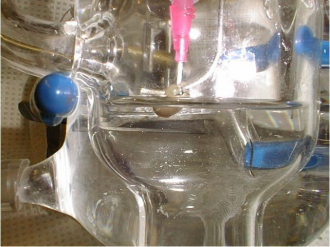 The postgraduate doctoral theme is included in the field of cardiovascular research and especially of cardiac electrophysiology. We aim to study by applying electrophysiological tools (standard microlelectrode and patch-clamp technique) the role of several transmembrane currents in the action potential repolarization in healthy and special diseased models (as atrial fibrillation and heart failure). We focus on the pharmacological modulation of these diseases in isolated mammalian cardiomyocytes and transgenic expression (cloned cell lines) systems as well.
The postgraduate doctoral theme is included in the field of cardiovascular research and especially of cardiac electrophysiology. We aim to study by applying electrophysiological tools (standard microlelectrode and patch-clamp technique) the role of several transmembrane currents in the action potential repolarization in healthy and special diseased models (as atrial fibrillation and heart failure). We focus on the pharmacological modulation of these diseases in isolated mammalian cardiomyocytes and transgenic expression (cloned cell lines) systems as well.
– Modulation of the repolarization processes in cardiac muscle (Supervisor: László Virág PhD)
Investigation of the role of transmembrane ion currents in action potential repolarization and arrhythmia-mechanism as well as their pharmacologic modulation in mammalian cardiac muscle and expression systems.
– Atrial fibrillation, heart failure, mechanisms of verticular cardiac arrhythmias, sudden cardiac death, cardiac electrophysiology, proarrhythmic effects of drugs, myocardial infarction, calcium homeostasis (Supervisor: István Baczkó PhD)
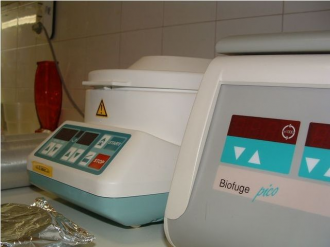 The research infrastructure
The research infrastructure
Consists of complete set-ups for application of conventional microelectrode technique, measuring sites for patch-clamp experiments (including Axopatch amplifiers and inverse microscopes with videoprojectors), epifluorescens intra and extracellular Ca2+ movement measurements, haemodynamic and in vivo electrophysiologic laboratories with computer-assisted instrumentation (including ultrasound and electromagnetic flowmeters, sonomicrometer, treadmill apparatus, telemetric electrocardiograph, 16-channel data acquisition and analyzing systems), laboratories for the study of the mechanical and cellular electrophysiological parameters of blood vessels, polarographic technique for the measurement, sterile operating theatre with anaesthesia and respiratory apparatus and with radiographic installation for chronic instrumentation, computer-equipped departmental library.
The patch-clamp technique
Experiments are carried out in freshly enzimatically isolated ventricular myocytes isolated from dog, rabbit and guinea pig hearts. One drop of cell suspension is placed within a transparent recording chamber mounted on the stage of an inverted microscope (Olympus IX 51 or Nikon TMS), and individual myocytes are allowed to settle and adhere to the chamber bottom for at least 5 minutes before superfusion is initiated. Only rod shape cells with clear striations are used. Cell capacitance is measured by applying 10 mV hyperpolarising pulse from –10 mV. The holding potential was -90 mV. The capacity is measured by integration of the capacitive transient divided by the amplitude of the voltage step (10 mV). HEPES buffered Tyrode's solution serves as the normal superfusate. Patch-clamp micropipettes are fabricated from glass capillaries using a microprocessor controlled P-97 Flaming/Brown micropipette puller. These electrodes have resistances between 1.5 and 2.5 Mohms when filled with pipette solution. Membrane currents are recorded with an Axopatch-1D and 200B amplifiers (Axon Instruments, Foster City, CA, USA) using the whole-cell configuration of the patch-clamp technique (see figure). After establishing a high (1-10 Gohm) resistance seal by gentle suction, the cell membrane beneath the tip of the electrode is disrupted by suction or by application of 1.5 V electrical pulses for 1-5 ms. The series resistance is typically 4-8 Mohm before compensation (50-80%, depending on the voltage protocolsMembrane currents are digitized using a 333 kHz analog-to-digital converter (Digidata 1200, Axon Instruments) under software control (pClamp 8.0, Axon Instruments). Analyses are performed using Axon (pClamp 8.0) software after low-pass filtering at 1 kHz. All patch-clamp data are collected at 37 °C.
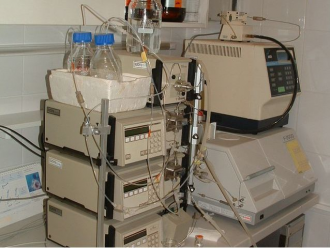 Major courses
Major courses
– Cardiovascular pharmacology (Prof. Gyula Papp MHAS)
– Microelectrophysiological techniques for the study of cellular and subcellular mechanisms in the cardiac effects of drugs (Prof. András Varró DSc)
– Haemodynamic and in vivo electrophysiological methods to investigate cardioprotective agents (Prof. Ágnes Végh DSc)
– Experimental models of cardiac arrhythmias and sudden cardiac death (Prof. István Leprán DSc)
– Analysis of the mode of action of drugs and endogenous substances on blood vessels (János Pataricza PhD)
2. Experimental Study of Clinically Significant Cardiorespiratory Pathomechanisms
Coordinator: Prof. Mihály Boros DSc
Institute of Surgical Research
H–6720 Szeged, Pécsi u. 6., Hungary
Phone: (+36 62) 545 103
Fax: (+36 62) 545 743
E-mail: boros@expsur.szote.u-szeged.hu
Vice coordinator: Prof. Zoltán Hantos DSc
Department of Medical Informatics
H–6720 Szeged, Korányi fasor 9.
Phone: (+36 62) 545 077
Fax: (+36 62) 544 566
E-mail: hantos@dmi.u-szeged.hu
Research topics
– Circulatory shock: macro- and microcirculatory consequences and therapeutic possibilities (Supervisors: Prof. Mihály Boros DSc, Prof. Sándor Nagy CSc, József Kaszaki PhD, associate professor)
Experimental study of respiratory, cardiac and vasoregulation under normal and pathologic (shock) conditions, with special emphasis on the role of mediator interactions and fluid resuscitation (colloid versus crystalloid).
– Pathologic circulatory mechanisms of the gastrointestinal system (Supervisors: Prof. Mihály Boros DSc, Assoc. Prof. Andrea Szabó PhD)
Experimental surgery in the gastrointestinal tract, modelling and influencing oxido-reductive stress states, application of intravital videomicroscopic techniques to these problems. Macro- and microcirculatory complications of major gastrointestinal surgical disease entities and interventions:
– Reflux oesophagitis
– Hypoxia-induced gastric mucosal damage
– Bowel ischaemia-reperfusion
– Small bowel transplantation
– Effects of compounds containing electrophilic methyl groups in oxido-reductive stress conditions.
– Antiinflammatory effects of phospholipids in ischemic and inflammatory diseases of the gastrointestinal system.
– Experimental studies on pathologic circulatory mechanisms of the urogenital system (Supervisors: Prof. Mihály Boros DSc, Assoc. Prof. József Kaszaki PhD, Assoc. Prof. Andrea Szabó PhD)
Study of the macro- and microcirculatory and biochemical consequences of ischemia/reperfusion and local inflammation in the urinary bladder and the testis using intravital visualization approaches (fluorescence intravital microscopy and orthogonal polarization spectral imaging technique).
– Macro- and microcirculatory consequences of traumas and orthopaedic interventions (Supervisors: Prof. Mihály Boros DSc, Assoc. Prof. Andrea Szabó PhD)
Study of the periosteal microcirculation during ischemia/reperfusion syndrome. Consequences of tourniquet ischemia, effects of fluid therapies (colloids and crystalloids).
– Mechanics of the respiratory system: airways and tissues (Supervisor: Prof. Zoltán Hantos DSc )
Functional and structural studies in experimental pulmoconstriction and small animal models of lung disease (emphysema, fibrosis, asthma etc.)
– Cardiorespiratory interactions in the pathomechanism of pulmonary diseases (Supervisor: Assoc. Prof. Ferenc Peták PhD)
Characterization of the lung mechanical changes subsequent to alterations in pulmonary haemodynamics. Exploration of the mechanisms responsible for the compromised lung function and airway hyperresponsiveness following changes in the pulmonary vasculature.
– Prognostic pathology of tumors (Supervisor: Gábor Cserni DSc)
The research topic focuses on the pathologic features which can predict disease outcome in malignant tumours, especially in solid tumours. Although the main interest is in breast and colorectal carcinoma, other tumours are also included as subjects of studies. The factors relevant to prognosis include classical pathological features of the neoplasms, but also features which can be studied by different molecular methods (e.g. mutation of oncogenes or tumour suppressor genes). Besides prognostic factors, the study of factors reflecting treatment effectiveness (i.e. predictive factors) are also included in the topic.
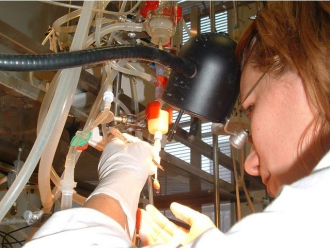 Research infrastructure
Research infrastructure
– Laboratories for histopathology and biochemistry equipped with the necessary instruments for the projects
– Circulatory laboratory with complete haemodynamic monitoring (pressure and flow signals) and computer-assisted registration possibilities
– Microcirculatory laboratory with intravital video-microscopy systems
– Fully-equipped sterile operating theaters with computerized data-acquisition systems and registration possibilities; microscopic units for microsurgical interventions
– Respiratory function laboratory for animal experiments (plethysmography, respiratory impedance measurements)
– Respiratory and gas laboratory with gas chromatography
– Isotope (level C) and tissue culture laboratories for in vitro studies
Major courses
– Animal experiments in medicine (Prof. Mihály Boros DSc)
– Basic haemodynamic registration and data evaluation (József Kaszaki PhD)
– Digital signal recording and evaluation (Prof. Zoltán Hantos DSc)
– Experimental surgical techniques (Prof. Mihály Boros DSc)
– Microsurgery (Andrea Szabó PhD)
– Intravital microscopy (Prof. Mihály Boros DSc)
– Biomechanics of circulation and respiration (Prof. Zoltán Hantos DSc)
3. Clinical and experimental investigation of the pathomechanism of hypertension and the mechanisms of antihypertensive agents
Coordinator: Prof. Sándor Sonkodi DSc
1st Department of Medicine, Division of Nephrology
H–6720 Szeged, Korányi fasor 8-10, Hungary
Phone: (+36 62) 545 810 Fax: (+36 62) 545 185
E-mail: sons@in1st.szote.u-szeged.hu
Major courses
– Population-wide prevalence. Awareness, treatment and control of hypertension (Iván Gyárfás CSc)
– Cardiovascular hypertrophy in hypertension (Zita Morvay PhD)
– The role of the splanchnic circulation in hypertension (Prof. Sándor Sonkodi DSc)
– The role of inflammatory processes in the pathomechanism of atherosclerosis (Prof. Sándor Sonkodi DSc)
– Diagnostic use of the DNA chip technique (László G. Puskás DSc)
Research topics
– The epidemiological aspects of hypertension (Supervisor: Iván Gyárfás CSc)
– The pathomechanism of hypertensive vascular changes and end-organ damage (Supervisor: Prof. Sándor Sonkodi DSc)
– The role of inflammatory processes in the pathomechanism of hypertensive vascular alternations and atherosclerotic processes (Supervisor: Zita Morvay PhD)
Representative dissertations 2005–2010 (title, author, supervisor, year)
- Electrophysiological investigation of antiarrhythmic compounds: mechanisms and the significance of repolarization in the proarrhythmic effects. Péter Biliczki, András Varró,2005
- Effects of preconditioning on myocardial regional contractility during low-flow ischaemia; the possible role of nitric oxide. Zsolt Szigeti, Ágnes Végh, 2006
- Possibilities of mucosal protection in bile-induced esophageal inflammation, Gábor Erős, Mihály Boros 2006
- Reperfusion injury of the periosteal microcirculation, László Gera, Mihály Boros - Andrea Szabó, 2007
- Pharmacological modulation of the cardiac Na+/Ca2+ exchanger: role in the study of Ca2+ handling and possible therapeutic applications. Károly Acsai, András Varró, 2007
- Modulation of vascular one by activators and inhibitors of membrane potassium channels in isolated conductance and capacitance blood vessels with especial regard to levosimendan, an inodilator drug. József Hőhn, János Pataricza, 2008
- Role of gap junctions in acute ischemia-induced arrhythmias and in the antiarrhythmic effect of ischemic preconditioning, Rita Papp, Ágnes Végh, 2008
- Colon obstruction-induced motility changes - the roles of glutamate and nitric oxide, Zsolt Palásthy, Mihály Boros – József Kaszaki, 2008
- Hypoxia-induced methane generation in vivo and in vitro: mechanism and significance Csilla Torday, Mihály Boros, 2009
- In vitro study of the electrophysiological properties of several cardioactive drugs in mammalian hearts, Zsolt Ákos Nagy, Norbert Jost, 2009
- Conformational dependence of the intrinsic acidity of the aspartic acid residue sidechain in N-acetyl-L-aspartic acid-N’-methylamide, Joseph C. Koo, András Varró, 2009
- Inflammatory activation after experimental limb ischemia-reperfusion. The possibilities of the therapy, Renáta Varga,Andrea Szabó, 2009
- Relaxation of isolated arteries by C-type natriuretic peptide; a model for developing hyperpolarizing vasodilators,Zoltán Márton, János Pataricza, 2009
- Effects of anaesthesia and perioperative management on respiratory function in children Britta S. von Ungern-Sternberg, Zoltán Hantos, 2009
- Microcirculatory damage of the periosteum. From clinical case history to animal experiments and to the bedside,László Török, József Kaszaki, 2009
- Respiratory mechanics in infant and adult mice modelling ventilator-induced lung injury, Vincenzo Cannizzar, Zoltán Hantos, 2010
- Clinical value of procedures in invasive cardiology for the assessment and relief of myocardial ischemia, Imre Ungi, Ágnes Végh 2010
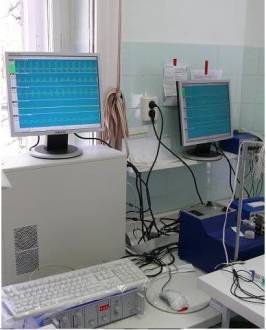 2. Biochemistry, Biophysics, Molecular and Cell Biology
2. Biochemistry, Biophysics, Molecular and Cell Biology
Programme director: Prof. László Dux DSc
Department of Biochemistry
H–6720, Szeged, Dóm tér 9., Hungary
Phone: (+36 62) 545 096 Fax: (+36 62) 545 097
E-mail: dux@biochem.szote.u-szeged.hu
Research topics
Humoral and neural effects on muscle differentiation and regeneration (Supervisor: Assoc. Prof. Luca Mendler PhD)
Cardiovascular stress adaptation: cellular mechanisms and pharmacological targets (Leading Supervisor: Prof. Péter Ferdinandy DSc)
The present group of research topics focuses on the pharmacology, biochemistry, and pathophysiology of cardiac stress and stress adaptation, seeking for biochemical mechanisms that can be potential pharmacological targets to protect the heart from different stress situations such as ischemia/reperfusion or systemic inflammation. Ischemic heart disease, the number one killer in the industrialized societies, is a complex disorder, often associated with other systemic diseases such as dyslipidaemia, hypertension and diabetes which exert multiple biochemical effects on the heart, independently of ischaemia. Ischemic preconditioning of myocardium is a well-described adaptive response in which brief exposure to ischemia markedly enhances the ability of the heart to withstand a subsequent ischemic insult. The underlying molecular mechanisms of this phenomenon have been extensively investigated in the hope of identifying new rational approaches to therapeutic protection of the ischemic myocardium. The research program is to investigate the ways in which systemic diseases may modify the preconditioning response and to find key cellular mechanisms to recapture the endogenous stress adaptation. Special topics in the above.
Role of nitric oxide, superoxide, peroxynitrite, and their cellular targets in cardiac stress adaptation (Supervisor: Csaba Csonka PhD)
Role of sensory neurons in cardiac stress adaptation (Supervisor: Assoc. Prof. Tamás Csont PhD)
The cardioprotective genetic program: gene expression profile of preconditioning (Supervisor: Prof. Peter Ferdinandy DSc)
Gene therapy for cardioprotection (Supervisor: Prof. Peter Ferdinandy DSc)
Influence of hyperlipidemia on cardiac stress adaptation (Supervisor: Csaba Csonka PhD)
Nitrate tolerance and cardiac stress adaptation (Supervisor: Assoc. Prof. Tamás Csont PhD)
Molecular psychoneuroimmunology studies in stressed state and in ischemic heart disease (Supervisor: Assoc. Prof. Margit Keresztes PhD)
The goal of our research team is to study the influence of psychological stress on immunological-inflammatory factors, focusing on the behaviour of granulocytes. In the ischemic heart disease project, examinations/assays of the markers indicating the state of the coronary arteries are also performed before/after percutaneous coronary intervention (PCI). For the detection of cell surface activation markers, immunofluorescent flow cytometry is used, and the determination of soluble markers is carried out mostly by ELISA; in addition, according to the integrative approach, psychological and cardiological tests/procedures are also performed (in cooperation with clinical experts).
Exploring signal pathways with the help of transgenic skeletal muscle (Supervisor: Ernő Zádor PhD)
The skeletal muscle can be made transgenic by transfecting the fibers with a „foreign” gene in order to reveal the gene’s function. The introduced genes are most frequently key factors and inhibitors of the most important signal pathways. With the help of this method we learned that the major proteins of contraction, the myosin heavy chains and the major proteins for relaxation, the sarcoplasmic reticulum Ca2+ATPases are regulated by distinct pathways, although they are expressed in a highly coordinated manner in differentiation and in many adaptational processes (Am. J. Physiol. 285:C853-C861; FEBS Lett. 579:749-752. The transgenic muscle can be advantageous compared to the completely transgenic animal because in this case the muscle development is taking place in wild type genetical background, therefore the effects of mutations interfering with muscle development can be avoided. Our present research is focused on the possible application of transgenic muscle in gene therapy (BBRC 375:265-270).
Factors regulating skeletal muscle remodeling (Supervisor: Ernő Zádor)
The remodelling means the ongoing reconstruction of cells and tissues while the whole organism appears to be in permanent stage or develops from one stage to an other. In recent years, a lot of regulatory factors have been discuvered in tissue remodelling. The remodelling of skeletal muscle is especially suitable for biochemical and molecular biological studies. The order of activation of signal pathways - transcriptional factors - genes involved in differenciation is well observable. Our group has developed one model in muscle regeneration and two models in muscle adaptation. We have described the mRNA and protein levels of a number of mRNAs and proteins which are regulating factors or a markers of differentiation (i.e.: Neuromusc. Disorders 8: 533-541; J. Muscle Res. and Cell Mot. 20:395-402; J. Muscle Res. & Cell Mot. 21:551-563; Biochem Biophys Res Commun 320:599-605). In these models the aim is to explore the changes and function of molecules and parameters described in the progress of skeletal muscle research.
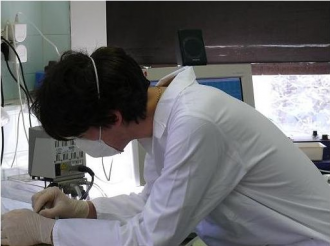 Standardization and quality control of macromolecular assays in pathobiochemistry, clinical biochemistry (Supervisor: Prof. László Dux DSc)
Standardization and quality control of macromolecular assays in pathobiochemistry, clinical biochemistry (Supervisor: Prof. László Dux DSc)
The programme provides opportunity in research and development of new measurement techniques in pathobiochemistry and clinical biochemistry, standardization and quality control of macromolecular assay methods.
In this study LC-IDMS/MS (liquid chromatography isotope-dilution mass spectrometry) procedures for determination of various drug compounds (immunosuppressive, antiretrovirale) in human blood has been developed by using Cs+ adducts in the selected reaction monitoring mode (SRM). The measurement of Cs-adducts in the quantitative HPLC-MS/MS technology resulted in high analytical specificity, accuracy, and precision. The LC-IDMS/MS procedure may be considered as a candidate reference measurement procedure and is appropriate to calibrate analytical routine systems.
HPLC-MS/MS System
The HPLC system was a Merck Hitachi Lachrom System, consisting of a D 7000 Interface, L 7100 Pump, L 7200 Autosampler and a L 7350 Column Oven (L 2480 Fluorescence detector and L 2450 Dioda Array Detector).
The Mass Spectrometer system used was a Finnigan-MAT TSQ 7000 triple stage quadrupole tandem mass spectrometer equipped with an electrospray ionisation interface (ESI) (Finnigan-MAT, Egersbach, Germany). Data processing was done with the Finnigan-MAT software packet ICIS and Xcalibur.
Structure and function of metal containing proteins (Supervisor: Res. Prof. Csaba Bagyinka DSc)
The study of the structure of bacterial cytochromes, blue copper proteins, hydrogenases and other bacterial metal containing proteins by spectroscopic and biochemical methods. The crystallization of these proteins. Measurement of redox kinetics, model calculations of protein structure and reaction kinetics.
Purification and characterization of membrane-bound redox proteins (Supervisor: Res. Prof. Alajos Bérczi)
The project focuses on purification by centrifugation and chromatographic methods and biophysical/biochemical characterization of a biological membrane (first step), then the membrane-bound redox protein (second step), finally reconstitution of the purified protein in proteo-liposomes (third step). The membrane protein of choice is a representative of the plant membrane-bound b-type cytochrome family.
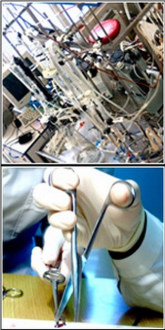 Physical interactions of supramolecular structures (Supervisor: Res. Prof. András Dér DSc)
Physical interactions of supramolecular structures (Supervisor: Res. Prof. András Dér DSc)
Our goal is to map physical interactions of supramolecular assemblies on the mesoscopic scale. As a main model structure we use purple membrane containing bacteriorhodopsin, a „paradigm” protein in Bioenergetics. Methods: photoelectric and integrated optical techniques, AFM. Bioelectronic (sensoric) application of the results is planned.
Femtosecond linear and nonlinear optical processes in proteins (Supervisor: Géza Groma CSc)
In our new femtobiological laboratory a pump-probe setup of 100 fs resolution makes possible to study the kinetics of ultrafast light-induced processes in proteins. Our primary interest is to understand the mechanism of light energy conversion in bacteriorhodopsin, but investigation of thermooptical phenomena on photosynthetic light harvesting complexes and electron transfer reactions of cytochrome c perturbed by mutagenesis are also planned.
Single particle manipulation by laser tweezers (Supervisor: Res. Prof. Pál Ormos MHAS)
Studies based on mechanical manipulations of biological macromolecules. We create microscopic mechanical machines that are driven by light and we use these for the study of mechanical manipulation of biomolecules. Presently, we primarily study the torsional properties of single DNA molecules and DNA-protein interactions that involve related processes.
Biophysical and biochemical studies of yeast vacuolar membranes (Supervisor: Tibor Páli DSc)
The project aims at gathering functionally relevant structural data in yeast vacuolar membranes on the ATP dependent proton pumping of V-ATPase using spectroscopic techniques. The dependence of both the ATP hydrolysis and proton pumping will be studied, primarily in native membranes, as a function of the physical state of the membrane, external conditions (temperature, oscillating electric field) and non-covalent V-ATPase inhibitors. These experiments will provide data for a better understanding of the functioning and regulation of the membrane-bound proton pumping molecular machinery, the V-ATPase.
Biophysical and biochemical studies of the vacuolar proton-ATPase (Supervisor: Tibor Páli DSc)
The project aims at a better understanding of the structure-function relationship of the V-ATPase. The protein and its sub-units will be isolated from yeast vacuolar membranes and reconstituted in artificial lipid membranes. Structural biology, based on spectroscopic techniques, will be used to study how the whole enzyme and its sub-units fold into the membranes and whether they are able to form a functional assembly.
Protein folding and assembly in biomembranes (Supervisor: Tibor Páli DSc)
Atomic models of selected lipid-protein systems will be built using spectroscopic data as constraints. Molecular mechanics programs on a computer cluster will be used. A more challenging alternative is to deal exclusively with protein folding using computational approaches involving the development of a knowledge-based forcefield for fast folding predictions.
Free radicals and spin traps in the human body (Supervisor: Tibor Páli DSc)
Electron paramagnetic resonance (EPR) is the most suitable and most widely used technique for detecting free radicals. Using, this technique will study the free radicals invading the human body from food and the air. A comparative study will be carried out on different solid food products and gases (cigarette smoke and car exhausts), with potential industrial applications in mind.
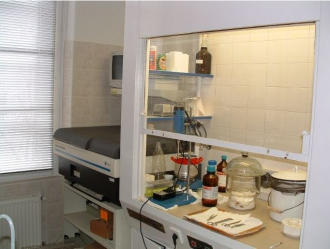 Lipid-protein interactions in biological membranes, their effect on the membrane dynamics (Supervisor: Balázs Szalontai DSc)
Lipid-protein interactions in biological membranes, their effect on the membrane dynamics (Supervisor: Balázs Szalontai DSc)
Lipid conformations will be studied in different (cyanobacterial thylakoid or yeast) model biomembranes as a function of the fatty acid composition of the membrane lipids. The fatty acid composition will be modified either by genetic manipulations or by altering the growth temperature. The work will mainly involve Fourier transform infrared spectroscopy as experimental technique.
Characterization and states of the nervous system by video-pupillometry (Supervisor: Zsolt Tokaji CSc)
We study the states and processes of the nervous system by eye-related measurements, and by this approach we intend to develop methods for objective, quantitative characterization of up till now mostly only subjectively measured states as sleepiness, anxiety, depression, etc. Besides continuation of video-pupillometry and visual contrast-sensitivity studies, that has been successfully used, one may join to the introduction and application of methods measuring further eye functions (light sensitivity, iris pigmentation, etc.) for this purpose.
The study of protein motions by atomic force microscope (Supervisor: Res. Prof. György Váró DSc)
We study the motion of the protein, during their function, by scanning force microscope technique. The main object is the bacteriorhodopsin, a light driven proton transporter across the cell membrane. We apply a complex study, by combining the AFM with photoelectric and spectroscopic methods, following the charge motions and the colour changes of the protein. The aim of the study is the understanding of the function of the charge transporting protein.
The role of the protein in the biological electron transfer processes (Supervisor: Res. Prof. László Zimányi DSc)
We investigate intraprotein and interprotein electron transfer initiated by photoactive redox labels. We study the effect of the structure and dynamics of the protein matrix on the rate of electron transfer. By producing mutants we map the electron transfer efficiency of the different regions of the protein.
The mechanism of the maturation of cytochrome c (Supervisor: Res. Prof. László Zimányi DSc)
We study by spectroscopic methods the function, and the interaction with its substrates, of the enzyme cytochrome c heme lyase, which plays a key role in the maturation of the mitochondrial cytochrome c (the covalent attachment of the heme). Heme lyase, which is assumed to be at least partially intrinsically unstructured, will potentially fold into transitional structures upon the interaction with heme and apocytochrome, thereby promoting the formation of the covalent bond.
Functional genomics studies of pathological samples (Supervisor: Res. Prof. László Puskás DSc)
This programme includes optimization, development and application of DNA- and protein-microarrays. Both DNA-chips and protein microarray technology is part of the global screening systems, which provide global view of a certain biological sample or its gene activity or its protein expression pattern.
During the programme we perform analysis of different pathological samples (animal models and clinical samples), from which we gain basic information on understanding the pathological states (diseases). By using these approaches we could develop novel diagnostic and therapeutic methods.
During the programme besides using the most up-to-date technologies we will apply bioinformatics tools and systems biological approaches – interdisciplinary research at multiple levels – to analyze human clinical samples.
Research facilities:
Experience in methods of epidemiology of hypertension.
European, North-American and Canadian licensed monitoring of blood pressure in human. Direct (Statham transducer and Hellige multiscriptor) and indirect (R+R tail-cuff equipment) measurement of blood pressure in the rat. Blood flow measurement in arterial blood vessels in the rat. Experimental hypertensive models in the rat (spontaneously hypertensive Okomoto rats, renovascular hypertension induced by silver chip, vasopressor agents infused by osmotic mini-pumps, 5/6 nephrectomy).
RIA laboratory (licence "C")
The assay of derivatives of hydroxyarachidonic acid by radioactive labelling. Estimation of the parameters of the renin-angiotensin system by RIA or molecular genetic methods.
DNS chip technique
Duplex ultrasonograph. Angiographic methods for investigation of the vascular system (X-ray immersing technique, DSA, CT, MRI). Assay of the parameters of inflammatory processes (including homocystein C-reactive protein).
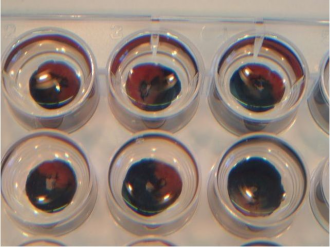 The Commencement of embryogenesis: a genetic dissection approach in Drosophila melanogaster (Supervisor: Prof. János Szabad DSc)
The Commencement of embryogenesis: a genetic dissection approach in Drosophila melanogaster (Supervisor: Prof. János Szabad DSc)
What tells a newly fertilized egg that it is time to start? What types of molecules and what roles play in the commencement of embryogenesis? When and where are those molecules made? Where are the deposited in the egg cells? To answer the above questions we identified genes, through dominant female-sterile (Fs) mutations in Drosophila, that are involved in the commencement of embryogenesis: although the mutant females deposit normal-looking and fertilized eggs embryogenesis fails to commence inside. We clone the Fs-identified genes and elucidate their molecular functions. We revealed the role of cytoplasmic dynein heavy chain, importin-β, the maternally provided α-tubulin isoform already and are in the process of learning about the role of sperm tunnel in the process.
Molecular biology of K+ channel function in heart muscle cells (Supervisors: Prof. János Szabad DSc, Zsolt Boldogkői PhD)
The special heart muscle cell characteristics are largely related to K+ channel functions. Where in the different heart regions and what types of K+ channels are present? What are their functions? What roles the different K+ channels play in life of the muscle cells? To answer the above questions we carried out real-time RT-PCR and a quantitative Western blot analysis on all known K+ channels. We are in the process of knocking out – by the RNAi technique – specific K+ channel functions in primary heart muscle cell cultures (and also in situ) and analyze – through electrophysiological techniques in collaboration with the Pharmacology Department – altered heart cell functions. The long range goal of the project is the DNA based identification of people with mutations in K+ channel genes and are inclined to sudden hear failure.
Gene transfer with intelligent viral vectors (Supervisor: Zsolt Boldogkői PhD)
Semiquantitative analysis methods in confocal microscopy and in protein quantification (Supervisor: György Seprényi, PhD)
Molecular histo- and cyto- diagnostic research (Supervisor: Tibor Krenács PhD)
Mature skeletal muscle fibres do not communicate through gap junctions, however, mononuclear myoblasts utilise gap junctions. We have been investigating the regulation of gap junction expression and myoblast coupling and their possible role in the course of early skeletal muscle differentiation leading to myoblast fusion.
Gap junction communication has been shown by our group to be involved in the humoral immune response. Follicular dendritic cell meshwork coupled by gap junctions work as a syncytium which is also coupled to activated B lymphocytes around the stage of positive affinity selection. If gap junctions play any significant role in B cell differentiation/selection is going to be studied by pharmacological and molecular genetic blocking of gap junction connexin43 in vitro in FDC-B cell cultures and in vivo after inducible deletion of Cx43 gene activity in mice.
Formaldehyde fixation of tissue samples masks antigenicity to be detected in diagnostic pathology. Development of antigen retrieval and signal enhancement techniques, which have been in the focus of our diagnostic research, allow reliable detection of trace amounts of antigens of diagnostic interest, which may play an important role in diagnostic and therapeutic decision making.
Tissue micro array technology can be used for a high throughput expression profiling of large number of selected tissue samples concentrated in normal-size paraffin sections. Modulation of expression of molecules involved in cell adhesion (e.g. EGF-R, cadherins, BP180, CD44, b-catenin), cell cycle regulation (e.g. p53, p27kip1, p21waf1, bcl-2) and DNA repair (e.g. telomerase, topisomerase II) associated with the dedifferentiation process in squamous cell carcinomas and melanomas of the skin, and in primary and metastatic lung cancer have also been investigated by our group. This approach of searching for molecular signs of dedifferentiation and tumour prognosis is also going to be utilised in a large series of breast and prostate cancers of different biological behaviour.
Role of immunosuppressive microenvironment in development of malignant tumors (Supervisor: László Krenács DSc)
Aim of the research is to investigate immunological and immunogenetical factors that are able to provide immune priviledge for lymphoreticular and solid tumors. The study will incorporate immunological and molecular pathological analysis of peripheral T-cell lymphomas, Hodgkin lymphomas, melanomas, gliomas, and breast cancer cases. We are intended to explore the communication between tumor cells and tumoral microenvironment including tumoral stroma that can promote tumoral growth.
Methodology will be used during the research:
– Immunohistochemistry
– In situ hybridization
– Polymerase chain raection
– Molecular cloning
– Cell culture
Role and regulation of extracellular matrix protein genes in health and disease (Coordinator: Res. Prof. Ibolya Kiss DSc)
Multicellular organisms deposit a highly organized extracellular matrix (ECM) around the cells, which provides physical support and the necessary milieu for normal cell metabolism and development, and delineates pathways during differentiation and tissue regeneration. The ECM performs essential, but very divergent functions in the various tissues and organs. We investigate how matrilins and other noncollagenous glycoproteins (e.g. cartilage link protein) involved in the organization of the ECM contribute to tissue integrity, differentiation and carcinogenesis using modern molecular biology methods, cell culture and transgenesis. In the framework of national and international collaborations, we study the influence of matrilin-2 deficiency on skeletal muscle regeneration, skeletal muscle and heart development, and induction of hepatocellular carcinoma. We are interested in the identification of signaling pathways, in which matrilin-2 is involved, including its interacting partners in the ECM and cell membrane. We also plan to investigate the expression of matrilin-2, other ECM proteins and Kir2.x ion channels in delated cardiomyopathy compared to non-diseased heart. We also investigate how the tissue-specific expression of matrilin genes is regulated in the developing musculo-skeletal system, focusing on the unique control mechanism restricting the matrilin-1 gene expression to distinct growth plate zones.
Role of matrilin-2 in skeletal muscle regeneration and in muscle differentiation (Supervisors: Res. Prof. Ibolya Kiss and Res. Prof. Ferenc Deák DSc
We observed transient increase in the matrilin-2 gene (Matn2) expression during notexin induced rat skeletal muscle regeneration. We are currently investigating the consequences of matrilin-2 deficiency on skeletal muscle regeneration in Matn2 knockout mice in collaboration with the laboratory of Prof. Dux László DSc. We also study myogenic differentiation in C2/7 myoblast cell line silenced in Matn2 using Sh RNA interference and following rescue. We plan to identify the signal transduction pathways disturbed in the absence of matrilin-2.
Role of matrilin-2 in tumor formation and testing the effect of anticancer drugs on hepatocarcinoma induction in matrilin-2 deficient mice (Supervisors: Res. Prof. Ibolya Kiss DSc and Res. Prof. Ferenc Deák
We observed increased hepatocarcinoma induction in Matn2 knockout mice in collaboration with the laboratory of Prof. Ilona Kovalszky DSc (Semmelweis University, Budapest). We study the molecular mechanism of tumor formation and the signaling pathways underlying the protective effect of matrilin-2 against tumor induction. We also utilize this transgenic animal model to study the effect of avinomids on hepatocarcinoma induction in collaboration with the laboratory of László Puskás DSc.
Dissecting the unique regulatory mechanism restricting the matrilin-1 gene expression to distinct growth plate zones in transgenic mice (Supervisor: Res. Prof. Ibolya Kiss DSc)
We have found that the matrilin-1 short promoter based on its interaction with homologous or heterologous upstream elements plays dominant role in determining the restricted cartilage-specific expression of the reporter gene in transgenic mice. We characterize the DNA elements and transcription factors involved in this unique regulation using a variety of in vitro assays (e.g. EMSA, supershift analysis, in vivo fooprinting) and in vivo techniques (transient expression, forced expression, transgenesis).
Development of transgenic mouse models suitable for testing the effect of drugs on skeletal development and cartilage regeneration (Supervisor: Res. Prof. Ibolya Kiss DSc)
We have generated transgenic mice expressing the reporter gene i) only in distinct zones of the growth plate; ii) in chondrocytes of each developmental stages in the developing skeleton. We plan to develop further and standardize these transgenic animal models for testing the effect of drugs on skeletal development and cartilage regeneration in collaboration with the laboratory of Prof. György Falkay DSc.
Expression of ECM molecules and ion channels in healthy and diseased myocardium (Supervisor: Res. Prof. Ibolya Kiss DSc)
We aim to investigate the expression and possible function of ECM molecules such as matrilin-2, fibronectin and collagens in healthy and diseased heart tissues. We also compare the differences in the amount and organization of potassium ion channels (Kir2.x) between healthy and diseased heart muscle using qRT/PCR, immunoblotting, immunofluorescence and immunoprecipitation in collaboration with the laboratory of Prof. András Varró DSc.
Mapping of the matrilin-2 functional domains in cell culture and in vivo (Supervisor: Res. Prof. Ferenc Deák DSc)
Matrilin-2 is a constituent of the extracellular matrix in many organs. In cell culture it can be observed as part of a filamentous network. We aim to reveal the role of the protein domains in homo-oligomer formation and interaction with other ECM components and cell surface proteins.
Evolution of genetic and drug interaction networks (Supervisor: Balázs Papp PhD)
The evolution of antimicrobial resistance remains a great challenge for the pharmaceutical industry. Development of more effective antibacterial compounds will require a better understanding of the behaviour of cellular networks in response to perturbations. Our aim is to use large-scale microbial evolutionary experiments to measure the speed of compensatory evolution following the inactivation (by means of mutation and drug treatments) of candidate target genes.
Role of IS elements in adaptive evolution (Supervisor: Pál Csaba PhD)
The ability of cellular systems to adapt to genetic and environmental perturbations is a fundamental, but poorly understood process both at the molecular and evolutionary level. There are both physiological and evolutionary reasonings why mutations often have limited impact on cellular growth. First, perturbations that hit one target often have no effect on the overall performance of a complex system (such as metabolic networks), as perturbations can be adjusted by reorganizing fluxes in metabolic networks, or changing regulation and expression of genes. Second, due to rapid evolution in microbes, the effect of a perturbation can readily be alleviated by the evolution of compensatory mutations at other sites of the network. These problems also highlight the potential limitations on single-gene-target drug strategy. Theoreticians suggested that systematic drug-design strategies should be directed against multiple targets, however, the issue of multiple target perturbation remains poorly understood. In collaboration with several leading research teams in the field, we investigate the following issues. First, we ask how accurately genome-scale metabolic network models can predict the impact of genetic deletions and other non-heritable perturbations. Second, to understand how the impact of genetic and drug perturbations can be mitigated during evolution, we pursue a large-scale lab evolutionary protocol, and compare the results with predictions of computational models. Our work may suggest avenues of research on the general rules of acquired drug resistance in microbes.
Studies on the mechanism of the conformational transition of the prion protein (Supervisor: Ervin Welker, DSc)
Transmissible spongiform encephalopathies (TSE-s) are fatal neurodegenerative disorders of which primary symptoms usually include progressive dementia and ataxia, associated with spongiform degeneration of the brain and accumulation of an abnormal protease-resistant form of the prion protein (PrPres) in the central nervous system. Our aim is to understand the conformational transition of the protein to this abnormal isoform (PrPres).
The role of the prion protein in the progression of transmissible spongiform degenerations (Supervisor: Ervin Welker DSc)
Transmissible spongiform encephalopathies (TSE-s) are fatal neurodegenerative disorders of which primary symptoms usually include progressive dementia and ataxia, associated with spongiform degeneration of the brain and accumulation of an abnormal protease-resistant form of the prion protein (PrPres) in the central nervous system. Our aim is to discern how the formation of this abnormal form is associated with the neuronal cell death that is evident in this disease.
The role of transporters in drug pharmacokinetics and diagnostics – in vitro assays (Supervisor: Péter Krajcsi PhD, Solvo Biotechnology )
Transporters that play a role in drug transport form two large superfamilies. The solute carriers (SLC) mediate mostly cellular uptake of drugs and the ATP-binding cassette (ABC) catalyze cellular efflux. The variation of expression levels as well as polymorphism of transporters results in differences in drug handling at the level os patients. Therefore, in vitro testing of drug – transporter interaction is of great value in drug discovery and development.
Utilization of excipients to improve drug absorption (Supervisor: Péter Krajcsi PhD, Solvo Biotechnology)
Excipinents once considered as biologically inert components of drug formulations have recently been shown to enhance drug absorption via inhibition of lumenally located efflux transporters (e.g. P-gp, BCRP). We intend to study mechanistic aspects of these interactions as well as generate a database on the interaction of excipients and excipient combinations with influx as well as efflux transporters.
Major courses
– Advanced Biophysics (Res. Prof. László Zimányi DSc)
– Advanced Biochemistry (Prof. László Dux DSc)
– Advanced Molecular and Cell Biology (Prof. János Szabad DSc)
Representative dissertations 2005–2010 (title, author, supervisor, year)
- The Gramicidin S structural motif: a promising platform for the rational design of antibiotic agents, Mónika Kiricsi,László Dux, 2005
- Stress adaptation of the heart: role of hyperlipidemia and and MMP-2, Zoltán Giricz, Péter Ferdinandy, 2006
- Mannose activation pathway for glycoconjugate biosynthesis is indispensible for Leishmania virulence a study that identifies potential drug targets and vaccine development candidates, Attila Garami, László Dux, 2006
- The general relationship between the structure and function of proteins, Hedvig Hegyi, László Dux, 2006
- Development and optimization of reference measurement procedures, Patricia Kaiser, László Dux, 2006
- α-tubulin4 is essential for rapid formation of long interpolar microtubules to push apart the daughter centrosomes along the nuclear perimeter during early Drosophila embryogenezis, Zsolt Venkei, János Szabad, 2006
- Investigating biological samples with atomic force microscope: from living cells to molecular level, Zoltán Bálint, György Váró, 2006
- The expression of muscle specific genes in mechanical ventillation and regeneration, Gábor Rácz, Ernő Zádor, 2007
- Crystal structure of the AAA and DNA-binding domain of the sigma54-activator ZraR, László Sallai, László Dux, 2007
- The role of apolipoprotein B-100 and biglycan in the development of atherosclerosis – a transgenic mouse study,Erika Bereczki, Miklós Sántha, 2007
- Direct cell cell communication through gap junctions during early skeletal muscle development and regeneration in the rat, Anikó Görbe, Tibor Krenács,2007
- How is expression of the importin ß encoding Ketel gene of Drosophila regulated? Zoltán Villányi, János Szabad, 2008
- Myocardial stress adaptation: role of peroxynitrite and capsaicin-sensitive sensory nerves, Péter Bencsik, Péter Ferdinandy, 2008
- Poly- (amino acid) polyelectrolyte films: Structure and interactions with proteins and lipids Ana-Maria Pilbat, Balázs Szalontai, 2008
- The need for speed”; the role of α4-tubulin in adapting the spindle apparatus to the needs of early Drosophila embryogenesis Imre Gáspár, János Szabad, 2009
- HorkaD, a chromosome instability causing mutation in Drosophila, identifies the lodestar gene and indicates involvement of the LDS protein in metaphase chromatin surveillance Tamás Szalontai, János Szabad, 2009
- Expression and function of the potassium channels of the human heart, Balázs Ördög, János Szabad, 2010
- Functional analysis of pseudorabies virus genes, Dóra Tombácz, Zsolt Boldogkői, 2010
- Myocardial stress adaptation: Role of hyperlipidemia, Gabriella Kocsis-Fodor, Tamás Csont, 2010


 Print article
Print article Send link
Send link Share
Share



